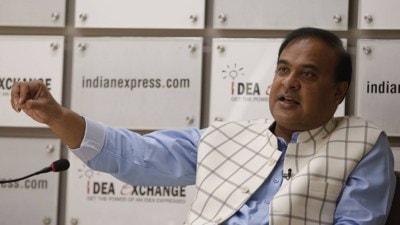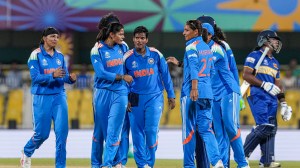The School LEAVERS
A nine-year-old in Noida leaves her school to write a novel. A 19-year-old in Nashik takes a gap year before college to discover herself...
A nine-year-old in Noida leaves her school to write a novel. A 19-year-old in Nashik takes a gap year before college to discover herself. Yet another is painting in Udaipur. In a land where ambitions can be carefully choreographed from playschool to postgraduation,a few students are shrugging their shoulders and becoming gappers
Nine-year-olds dont get to leave school to write a novel. Aayushi Pandey managed to do just that. School,she says,left her with no time to do the things she wanted to: read more Famous Five books,dress up her dolls,travel and dance. And when was she going to write the novel she had thought of (Thrilling Three,she calls it,the adventures of two girls and a dog,who find that an abandoned house in the neighbourhood is indeed a den of thieves)? So,one day in March,the Class V student of Apeejay School,Noida,with the support of her parents,decided to give school a miss for a year.
I found school boring. I fell asleep in the social sciences class. I wanted to read and write,but there was no time for that, she says. I think I did the right thing by leaving school. I have already written four pages of my novel. Three months into her gap year,she has travelled to a few remote villages in Himachal Pradesh,learned something about local communities there and helped her father Sanjiv Pandey set up a library. For Sanjiv,a civil servant in Delhi,it was a collective,though not an easy,decision by the family: At the end,my wife and I thought the rat race would do Aayushi no good. She is interested in so many things. Let her explore them. After the gap year,Aayushi will decide whether to go back to school or opt for homeschooling. For now,she is free.
In India,where school is the axis of aspirations and the sine qua non for success,a gap year is an oddity. Ranks and attendance are prized here,not a breaking away. Extra-curricular is accommodated here,not non-curricular. But a few like Aayushi are shrugging their shoulders and moving away from the mainstream.
Sakhi,a Nashik girl,has known the freedom of a gapper someone who takes time off during or after school to travel,pick up a hobby or simply be twice. When she was in Class VII,she put together a presentation for her parents that she called Skipping School. In that,she listed all the things she wanted to do for a year learn Sanskrit,French and art,travel,even cook a little. Her parents Nitin and Anita were persuaded. We thought Sakhi should give it a try. Our own belief in the education system was dwindling, says Anita. Sakhi travelled with her parents to Jordan and Lebanon and later opted for homeschooling. She returned to school in Class X when she wanted to be back with her friends. Now,after Class XII,the 19-year-old is taking another gap year. I was in Delhi for three months teaching English to women from lower income groups who wanted to become cab drivers, she says. A gap year is all about discovering oneself.
In the West,the gap year is an institution,part of an established system,the breathing space between high school and college when young men and women get off the conveyor belt of grades and performances to explore the world and themselves. In India where adjustment issues in school are often dealt with the delicacy of a hammer pounding a square peg into a round hole the only acknowledged gap year is the break that engineering/ medical college aspirants take to do all the cramming it takes to clear entrance tests. Most students abroad spend their year off travelling the world,volunteering or working overseas,and in part immersing themselves in a different culture. In India,students mostly travel around the country,helping out with community service in rural areas. A few who can afford it,travel abroad. In the West,gappers leave their backpacks to enter the university. In India,gappers often have an extended disillusionment with the system and opt for open schooling.
All through his school years,Nirmal Prajapati felt hemmed in. He says he was sprinting,scrambling to the finish line. But in his head,among the jumble of calculus and geometrical shapes,were images of strange fish. He wanted to draw them on a canvas before his imagination shorted out. But more school work flowed into his hours. Thats when he attended an art workshop organised by Shikshantar: The Peoples Institute for Rethinking Education and and Development and knew he needed to pause,slow down and paint. He was 18,a student of Class X in Udaipur,when he took a break from school. I didnt like what school looked like,or behaved like. It was too much sitting there for hours,your attention compartmentalised into periods, says Prajapati,now a 25-year-old painter who makes do with small assignments.
His little studio in Udaipur is stacked with paintings (he is yet to sell a canvas). On one canvas,the bodies of the fish disappear midway and from their intertwined torsos erupt elephants heads. On another,an elephants trunk bursts into giant,headless snakes. Had he remained in school,he says,the fish on his canvas would have remained true to its species. Prajapati just gave his Class XII examinations through open school.
The gap year originated in England in the decade following World War II when young people started travelling to other countries to understand different cultures. It was encouraged by governments: if youth could travel,cross over,learn to adapt to diversity and even accept it,peace would not be so elusive.
In the United States,guidance counsellors and admissions officers increasingly advise high school seniors to explore the option of gap year so that they can get a primer on life outside the classroom and its limited world. Princeton Universitys gap year programme asks students to go for a year of social work to other countries.
Fifteen years ago,India got one of its first gappers when Rahul Alvares talked his parents into letting him take a sabbatical after Class X. On the first day of his year-long break,Alvares cycled to an aquarium shop at Mapusa in Goa. It was a two-room shop off the main road with 20 fish tanks. Thats where he would work for weeks,breeding fish,learning to build aquariums and running errands for Ashok DCruz,a college friend of his father,who owned the shop.
His diary of those months later became a book,Free From School. In the beginning,Alvares says,he almost felt guilty about the break. He kept asking himself whether he was allowed this sort of an indulgence. But it helped him figure things out. In school I wanted to have a decent job and breed fish. Then in the gap year the fish thing went out of the window, he says. It was like I got my freedom. I knew what I wanted to do. I wanted to handle snakes. Alvares became a herpetologist.
Indias first Gap Year College was founded in Kempty in Mussoorie in 2007. It offered a nine-month programme to students above 18 years,where they were taught creative design,architecture,wood art,sketching,theatre,publishing,environment and ecology,among other things. Three years later,Manish Jain of Shikshantar set up Swaraj University in Udaipur (one of the reasons many there are fascinated by a gap year) is offering a two-year learning programme for people who are 16 and older.
But gap year is still met with scepticism in India. Gappers are considered a bunch of either too cool children or losers who didnt quite make it in school. It is considered a luxury that only the well-heeled can afford. Amita Mulla Wattal,principal of Springdales School on Pusa Road in New Delhi,says her students belong to middle and lower middle classes and they cant afford such a break. The question is who will fund this gap year. This is a luxury of choice, she says.
Thats what the family of Surendra Gandharva aka Sunny,who also took a gap year after Class XII three years ago,argued. They werent rich,his father was a singer and Sunny,like his brothers,needed to get a job,a regular income. But to Sunny,a whole year free from textbooks and routine was alluring. Sunny left his hometown Udaipur,travelled to Auroville in Puducherry,Kerala,Maharashtra and Goa,and then worked in an alternative school in a village in Rajasthan. There he taught children life skills,rainwater harvesting and other knowledge that he had picked up on his travels.
When he got back home,he bought a second-hand solar cooker,and now uses local grains to bake solar cookies that he also sells. In my break year,I learned about alternative education. I asked a lot of questions,I found many answers and now I know what I really want to do, he says. I took a different path and I am happy I chose to be unconventional.
Nyla Coelho of TaleemNet,an organisation that believes in education outside the school walls,says the idea is trickling down to other strata of society. Since 2000,many children have come to us. They are sometimes unsure,and want to know if they are doing the right thing. It is a tough thing to opt out but there are a lot of serious parents and children who are making the choice.
Rama Barhats parents too opposed the idea of her taking a gap year. But she didnt want to be a doctor or a teacher,to live out her parents aspirations. Three years ago,after Class X,she walked out of her government school in Udaipur. Armed with a camcorder that she was given as part of a film-making workshop in Goa,she is now trying to capture life and its quirks. Her first film was called Meri Movie and it told her story,how she left school,and how she has changed as a person. She is now pursuing her studies through open schooling,torn between her own rebellion and her parents concern for her. She is also making films,her latest is on the only woman auto driver in Udaipur.
There are several others: Chinmay Futane who quit his distance education programme to do organic farming. Or,Mukta Navrekar,20,who took a break after Class XII and spent her year off volunteering for the Indian Red Cross Society and then for the Nirmal Gram Nirman Kendra,an organisation run by her parents in Nashik. I was not interested in mainstream education. I did not know what I would do after school or college. This way,I got the experience that helped me figure what I want to do in life, she says. Now Navrekar is doing a bachelors in sociology from IGNOU.
Perhaps students find a purpose in their gap year,perhaps it is just an excuse for the restless few. But in a country where ambitions can be carefully choreographed from playschool to postgraduation,the gap year is a breather,a tempting anomaly.



- 01
- 02
- 03
- 04
- 05




























